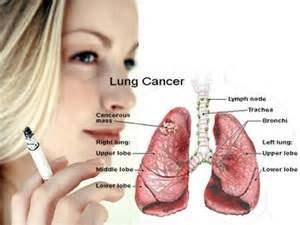 Nutrients in plants are not always easily digested.
Nutrients in plants are not always easily digested.
This is because plants may contain antinutrients, which are plant compounds that reduce the absorption of nutrients from the digestive system.
They are of a particular concern in societies that base their diets largely on grains and legumes. That’s us Indians, folks!
This article reviews several simple ways to reduce the amount of antinutrients in foods. In some cases, they can be eliminated almost completely.
What are Antinutrients?
Antinutrients are plant compounds that reduce the body’s ability to absorb essential nutrients.
The most widely studied antinutrients include:
- Phytate (phytic acid): Mainly found in seeds, grains and legumes, phytate reduces the absorption of minerals from a meal. These include iron, zinc, magnesium and calcium.
- Tannins: A class of antioxidant polyphenols that may impair the digestion of various nutrients.
- Lectins: Found in all food plants, especially in seeds, legumes and grains. Some lectins may be harmful in high amounts, and interfere with the absorption of nutrients.
- Protease inhibitors: Widely distributed among plants, especially in seeds, grains and legumes. They interfere with protein digestion by inhibiting digestive enzymes.
- Calcium oxalate: The primary form of calcium in many vegetables, such as spinach. The calcium bound to oxalate is poorly absorbed.
HOW CAN WE REDUCE ANTINUTRIENTS
1. Soaking
Beans and other legumes are often soaked in water overnight to improve their nutritional value. Most of the antinutrients in these foods are found in the skin. Since many antinutrients are water-soluble, they simply dissolve when foods are soaked.
For example, a study found that soaking pigeon peas for 6-18 hours decreased lectins by 38-50%, tannins by 13-25% and protease inhibitors by 28-30%.
Not only is soaking useful for legumes, leafy vegetables can also be soaked to reduce some of their calcium oxalate. Soaking is typically used in combination with other methods, such as sprouting, fermenting and cooking.
2. Sprouting

This process increases the availability of nutrients in seeds, grains and legumes.
During sprouting, changes take place within the seed that lead to the degradation of antinutrients such as phytate and protease inhibitors. Sprouting has been shown to reduce phytate by 37-81% in various types of grains and legumes, and a slight decrease in lectins and protease inhibitors.
3. Fermentation

Fermentation is an ancient method originally used to preserve food.
It is a natural process that occurs when microorganisms, such as bacteria or yeasts, start digesting carbs in food.
Although food that becomes fermented by accident is most often considered spoiled, controlled fermentation is widely used in food production.
Food products that are processed by fermentation include yogurt, cheese, wine, beer, coffee, cocoa and soy sauce.
Another good example of fermented food is sourdough bread. Making of sourdough effectively degrades antinutrients in the grains, leading to increased availability of nutrients. In fact, sourdough fermentation is more effective at reducing antinutrients in grains than yeast fermentation in typical bread.
In various grains and legumes, fermentation effectively degrades phytate and lectins.
For example, fermenting pre-soaked brown beans for 48 hours caused an 88% reduction in phytate.
4.Boiling

High heat, especially when boiling, can degrade antinutrients like lectins, tannins and protease inhibitors. One study showed that boiling pigeon peas (chana) for 80 minutes reduced protease inhibitors by 70%, lectin by 79% and tannin by 69%.
Additionally, calcium oxalate is reduced by 19-87% in boiled green leafy vegetables. Steaming and baking are not as effective.
In contrast, phytate is heat-resistant and not as easily degraded with boiling (4, 12).
The cooking time required depends on the type of antinutrient, food plant and the cooking method. Generally, a longer cooking time results in greater reductions of antinutrients.
Combination of Methods
Combining many methods can reduce antinutrients substantially, sometimes even completely.

As an example, soaking, sprouting and lactic acid fermentation decreased the phytate in quinoa by 98%. Similarly, sprouting and lactic acid fermentation of corn and sorghum degraded phytate almost completely. In addition, soaking and boiling pigeon peas led to a 98-100% reduction in lectins, tannins and protease inhibitors (12).
Overview
Below is an overview of the main antinutrients and effective ways to eliminate them.
- Phytate (phytic acid): Soaking, sprouting, fermentation.
- Lectins: Soaking, boiling, heating, fermentation.
- Tannins: Soaking, boiling.
- Protease inhibitors: Soaking, sprouting, boiling.
- Calcium oxalate: Soaking, boiling.
Take Home Message
Antinutrients can significantly reduce the nutritional value of many plant foods.
Luckily, they can be degraded with a few simple methods such as heating, boiling, soaking, sprouting and fermenting.
By combining different methods, many antinutrients can be degraded almost completely.


